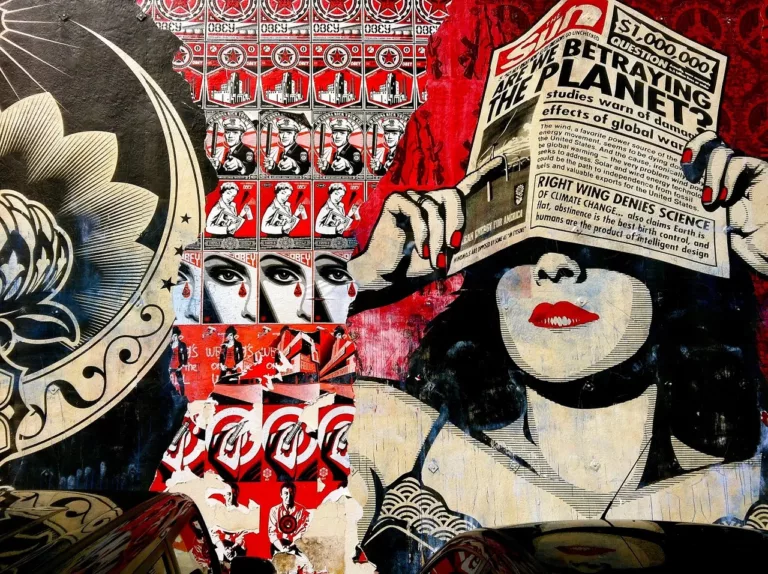Western media is being “systematically” manipulated by ongoing pro-Kremlin propaganda and disinformation efforts, according to the findings of a recent study by researchers at Cardiff University.
Euro News reports that more than three dozen prominent European news websites have been targeted in recent days, primarily through reader comments left on news stories. Outlets include Germany’s Der Spiegel, UK outlets like the Daily Mail and The Times, and several others from many European countries.
Though the reach and effectiveness of propaganda in the connected world of today have obviously increased with the help of the Internet, propaganda is nothing new. In fact, it has been used since antiquity by those in positions of power to steer political narratives, which at times may present challenges for historians studying the social structure of the ancient world.


Propaganda: A Problem Throughout History
Discerning historical truth from the narratives left to us by ancient cultures has long presented issues for scholars seeking to learn about the past. Stories whose origins began as parts of oral traditions were often embellished with mythical tropes and other elements, meaning that the versions which reach us today can be quite different from what a true depiction of history would have shown.
Mythology being incorporated into stories over time is just one of the ways historical narratives can become embellished. Another involves how many ancient cultures also relied on propaganda to put a favorable spin on how future generations would remember them.
In 2008, Archaeology reported on a site in Scotland where ancient Roman artisans used a blend of propagandized versions of the empire’s military exploits, paired with vivid use of color to enhance military narratives featured on the famous Antonine Wall.
“The Roman builders of the Antonine Wall used vibrantly painted sculptures as a propaganda tool to convey Rome’s superiority over native Scottish tribes,” an excerpt reads. During the second century when the wall was being constructed, the artisans made use of strategic locations where artistic depictions of Roman exploits in wartime were conveyed. Archaeologists studying the site using laser technology were able to reveal with the help of X-rays how vibrant tones of red and yellow paint were applied to the images to enhance their visual appearance in striking ways.
The Romans weren’t the only ones who relied on artistic depictions in such ways. “It is self-evident, but almost universally overlooked, that Egyptian art in many of its categories is propagandistic,” wrote William Kelly Simpson in his 1982 essay, “Egyptian Sculpture and Two-Dimensional Representation as Propaganda.”
“Statuary, two-dimensional representation, and both elements in the decorative arts may communicate a message and attempt to persuade, publicize, or influence the beholder’s attitude,” Simpson wrote. “The seated statues of Rameses II in front of the temple of Abu Simbel are part of the translation of a temple pylon with statues to a rock temple, yet they dearly serve as a signpost directed to the southerners of Rameses’ and Egypt’s might.”
How Alexander Became So Great
Similar use of highly propagandized art can be found in ancient Greece, Macedonia, and Persia, particularly under the influence of Alexander the Great. To work around stipulations imposed by the League of Corinth in the repatriation of some 20,000 Greeks, Alexander used propaganda in the early 300s to “deify” himself, becoming christened the son of almighty Zeus.


Not limiting his propaganda to art alone, Alexander produced currency and commissioned architecture, sculptures, and other media which emphasized his new deification, replacing all existing imagery of the mythical hero Hercules with his own likeness.
“Alexander was the first to recognize that to maintain cohesion and control over his vast empire, such propaganda symbols could serve as a constant reminder of the various subjugated populations just where the center of power resided,” wrote Garth Jowett in his book Propaganda and Persuasion.
“These strategies are still widely used today,” Jowett adds.
Propaganda Then and Now
“To be effective, propaganda must constantly short-circuit all thought and decision,” wrote French philosopher Jacques Ellul in his work Propaganda: The Formation of Men’s Attitudes.
“It must operate on the individual at the level of the unconscious,” Ellul wrote, adding that “He must not know that he is being shaped by outside forces… but some central core in him must be reached in order to release the mechanism in the unconscious which will provide the appropriate—and expected—action.”
Arguably, the most effective propaganda can not only shape our attitudes, but it manages to do so convincingly no matter what era in which one encounters it. A deeper look at history shows that the use of propaganda borrows heavily from practices that originated in the ancient world; and as the recent report from the Crime and Security Research Institute at Cardiff University shows, many of those tactics remain effective today.
“As mainstream social media platforms have become more alert to the risks of foreign state influence operations, so disinformation actors and propagandists have been seeking new vulnerabilities in the media ecosystem to exploit,” says Professor Martin Innes, Director of the Crime and Security Research Institute which produced the report.
Innes told Euro News that it is “vital that media companies running participatory websites are more transparent about how they are tackling disinformation and more proactive in preventing it.”
Follow and connect with author Micah Hanks on Twitter: @MicahHanks

